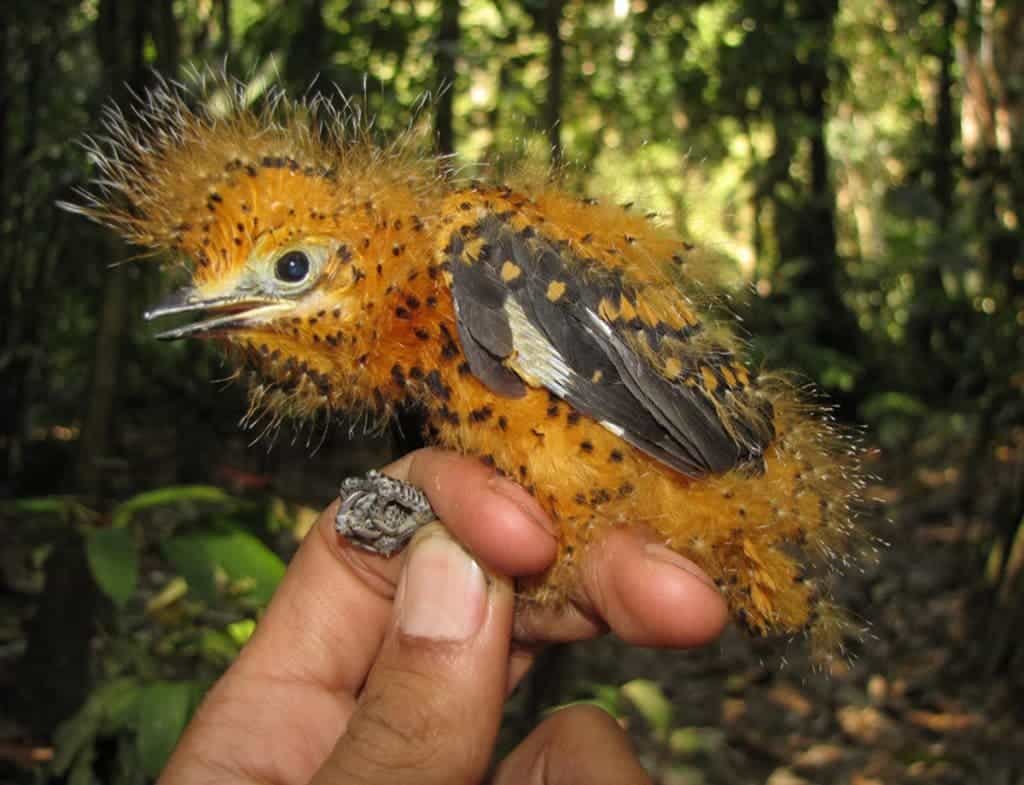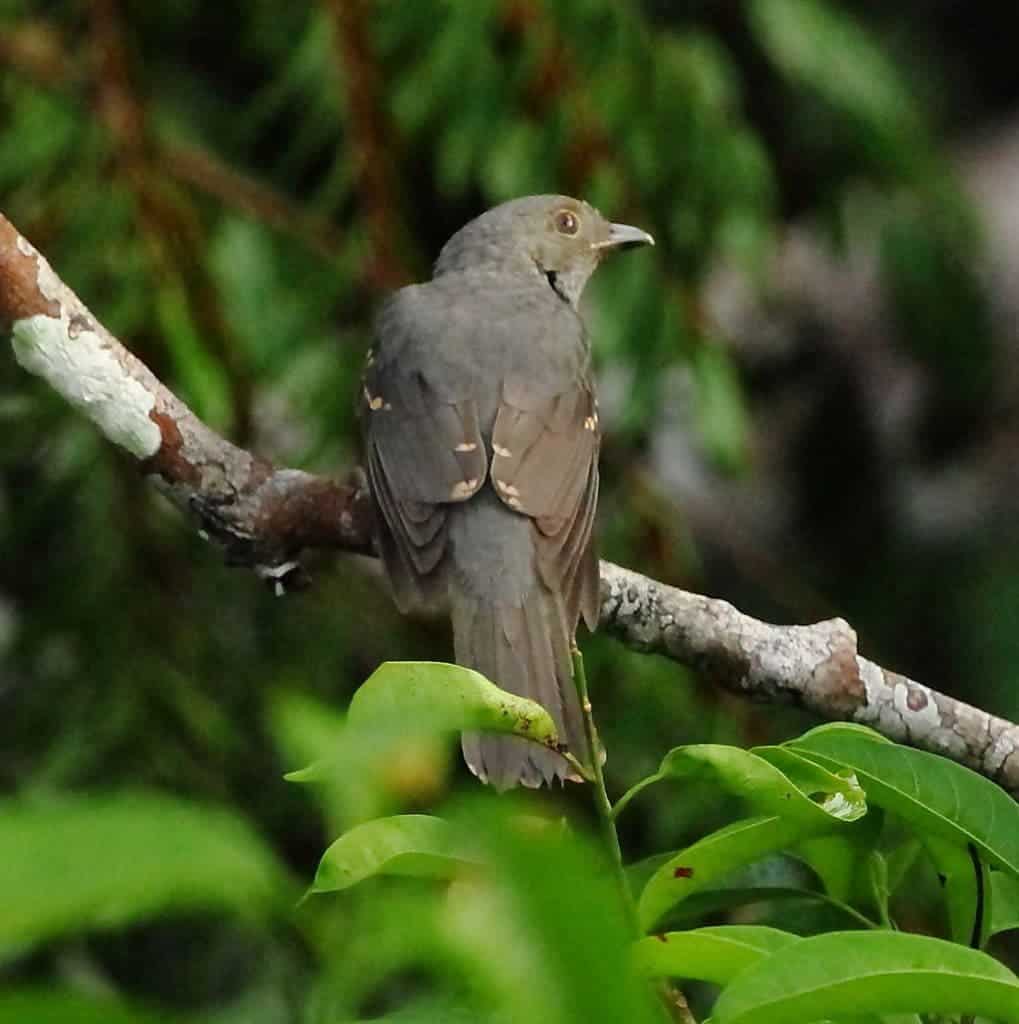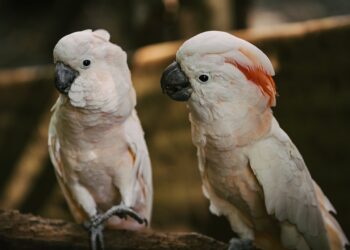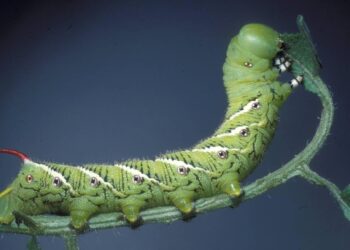The warm, humid Amazonian forests hold a stunning biodiversity; somewhere, deep in that magnificent area, a pretty normal looking gray bird makes its way to a nest made from dried leaves, to feed its offspring. It would seem that the nest has been devastated by a giant, toxic, bright orange caterpillar… but something magical happens – the caterpillar metamorphoses into a hungry chick eager to get its meal. The parent looks nothing like a caterpillar, so why does the chick look like one then ?

Adults may look very inconspicuous, but the chicks are a different story. The chicks use something called Batesian Mimicry, which is more common in invertebrates. In Batesian Mimicry, a harmless species has evolved to imitate the warning signals of a harmful species directed at a common predator. Basically, the chick wants to intimidate a predator by looking like a toxic caterpillar. This is very rare in birds – the only other recorded example is of burrowing owls producing hissing sounds like an agitated rattlesnake. But this case is much more complex, as the bird not only looks like, but also acts like the caterpillar.
The species in case is called Laniocera hypopyrra‘s (the cinereous mourner). This species has an extremely large range, covering most of the northern part of South AmericaThe global population size has not been quantified, but this species is described as ‘uncommon and patchily distributed’. The bird is not currently threatened with extinction, though like almost all South American birds, it suffers from habitat reduction due to deforestation. They build nests from dried leaves and spends most of their time foraging for food, returning to their nests to feed the young only once every hour – a very low return rate for birds. This means that for the most part, the chicks are alone, which makes them very vulnerable to predators. To handle this pressure, chicks developed complex anti-predatory strategies in the species.

Gustavo Londono, now at the University of California, came across a nest of the species in 2012, and he had the great idea of setting up cameras to see what happens in the nest. He found that the chick has bright orange feathers, some lined with black ridges and tipped with white barbs; the way it bobs its head from side to side makes it look even more like a caterpillar.

When the parent comes to the nest, the chick doesn’t start begging for food, like most birds. Instead, it assumes a very defensive posture, assuming it is a predator until the parent gives a very specific call.
“Mimicry plays a major role in deterring predators, but camouflage is also likely to occur when the nestling is on the nest,” says Londono. “To know more about the relative importance of these strategies in this species, we need studies with larger sample sizes.”
Journal reference: American Naturalist, DOI: 10.1086/679106






